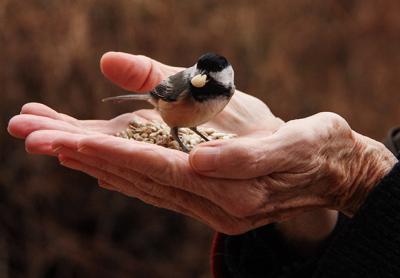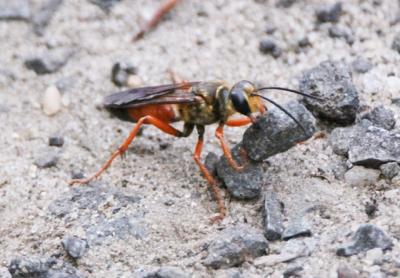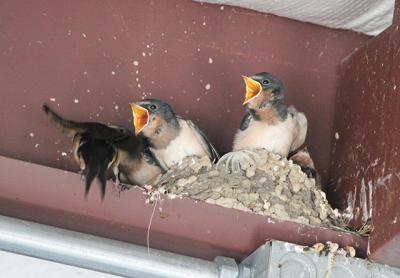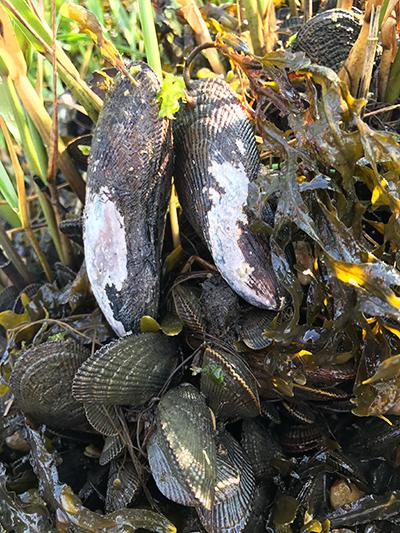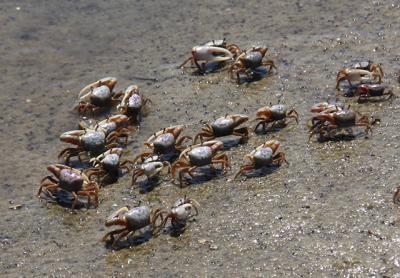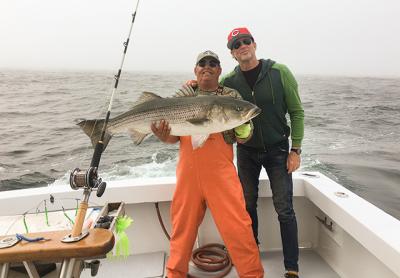And Now, Hurricane Season
And Now, Hurricane Season

I tried not to get caught up in the whole solar eclipse hype, but it was hard to escape the constant chatter and commotion leading up to the Monday afternoon event.
While grabbing an early cup of coffee on Saturday morning at my local 7-Eleven, I even noticed a display of some rather flimsy paper eyewear near the ever-rotating hot dogs for those keen on taking a peek at the infrequent celestial event. They had micro-thin, dark green plastic lenses that appeared not to be more than a sheet of Japanese nori seaweed paper. I passed on purchasing a pair, and the hot dog, too. Better to just take in the event as an everyday occurrence and go about my day’s business as usual. And if I were to somehow possibly miss it, I could always see it replayed on just about every media platform imaginable.
But upon my exit from the establishment, I glanced at the television screen above the counter to see that the Weather Channel was heralding acute warnings that the Atlantic hurricane season was gaining strength and was set to become more active. My ears perked up at that point.
Meteorologists and their forecasts will always get a bad rap. That will probably never change. However, I usually get a bit of a chuckle when Colorado State University puts out its annual forecast for the Atlantic Basin hurricane season.
For me, it’s just a matter of basic geography. Colorado is a pretty darn good distance from the Atlantic Ocean. I would figure the meteorologists on the campus located at the base of the Rocky Mountain Front Range would have a lock on predicting snowfall amounts for some of the nearby ski resorts. Notwithstanding the location of the college, the C.S.U. Tropical Meteorology Project has actually done a respectable job over the years in its projections.
The other week, C.S.U. updated its forecast for the rest of the Atlantic hurricane season this year. The new forecast is for 16 named storms (with winds of 39 miles per hour or higher), 8 hurricanes (74 m.p.h. or higher), and 3 major hurricanes of Category 3 or higher (111 m.p.h. and up). An average year has 12 named storms, 6 hurricanes, and 2 major hurricanes. Time only will tell how accurate C.S.U.’s predictions will be.
While the hurricane season enters its prime historical level of activity over the next few weeks, fingers remain crossed that Long Island will once again luck out and dodge a big storm. We’ve had a number of close calls over the years since Hurricane Bob hit the East End hard on Aug. 19, 1991, when it passed between Montauk and Block Island with gusts nearing 120 miles per hour. While electric power was knocked out in some locations for over a week, including for yours truly, the storm certainly left an indelible mark on the local fishing scene as well.
“We never caught a fluke after that storm,” recalled Capt. Michael Vegessi, the longtime operator of the Lazybones party boat out of Montauk. “The groundswells and dirty water just killed the rest of the season right then and there. We had to ultimately switch to striped bass and bluefish, something we would not normally do until much later in September.”
Vegessi also noted fishing can suffer just as badly even when a powerful storm remains far offshore. “Even a large storm off the Carolinas can kick up the seas pretty bad up here and throw the fishing off for many days,” he said. “Fluke are particularly sensitive to this, but others like bluefish and sea bass seem to be less affected. Each storm is different and can have different repercussions, no matter how close it gets.” Vegessi believes that noise plays a factor, too. “Wave and swell action create a lot of turbulence and noise on the bottom, and fluke just don’t like that. They shut down and move to quieter and cleaner water.”
Speaking of the current fluke action, Vegessi has been generally satisfied with the activity of late. “Some days are better than others,” he said. “Sea bass have picked up the slack, too, on some of the trips. But, let’s hope we don’t have any big storms to mess it up.” Depending on the action, Vegessi will likely stick with fluke until the middle of September, before focusing on bluefish and striped bass for the remainder of the season.
Some may think of him as a hurricane himself, but Harvey Bennett, proprietor of the Tackle Shop in Amagansett, was closely watching the track of his own storm — Tropical Storm Harvey — as it skimmed into the southern Caribbean Sea, before ultimately fizzling out as a depression before reaching the Yucatan Peninsula a few days ago.
“Hopefully we will avoid a major storm this season,” said Bennett, before noting that shark catches along the ocean beaches still remain common. “Most seem to be sandbar sharks, but there have been some others too.” He added that snappers continue to grow in size and remain plentiful at nearby docks and bulkheads, while porgy and sea bass fishing remains top notch in and around Gardiner’s Island. For aficionados of large bluefish, choppers up to nearly 20 pounds can be found roaming around Montauk Point, Shagwong, and Fort Pond Bay.
And as baseball season reaches its final stages of the season, Bennett’s season-long quest to secure various baseball items for underprivileged children in the Dominican Republic, including mitts, gloves, bats, and helmets, has officially entered the bottom of the ninth inning. “The boxes are getting filled, but we need more stuff,” exclaimed Bennett, giving his finest fiery Leo (the Lip) Durocher manager speech. “Keep looking in your basement.”
Over at Mrs. Sam’s Bait and Tackle in East Hampton, the owner, Sebastian Gorgone, was very enthused over the large influx of baitfish that have encamped at the northern end of Gardiner’s Island of late. “Lots of bait around that has brought in a mess of mixed sizes of blues and striped bass,” he said smiling behind the counter the other day. “One cast could have a small snapper blue and the next will be a 15-pound fish. Same with stripers, with the bigger fish hugging close down to the bottom.”
Ken Morse at Tight Lines Tackle in Sag Harbor reports that blue claw crab catches remain strong. “It’s been a great summer of catching in many of the coves, bays, and creeks,” he said. “Porgies are near Robins Island out to Cedar Point, while weakfish are still good around Noyac Bay.” If bluefish are on your menu, Morse suggested tossing a diamond jig on the incoming tide at Jessup’s Neck.
Those focused on offshore action continue to be pleased with sharks a close ride out from port. Plenty of mako and thresher sharks continue to follow the massive amount of bait set up in 100 feet of water south of Montauk.
Here’s to no hurricanes and calm seas.
We welcome your fishing tips, observations, and photographs at [email protected]. You can find the “On the Water” column on Twitter at @ehstarfishing.

